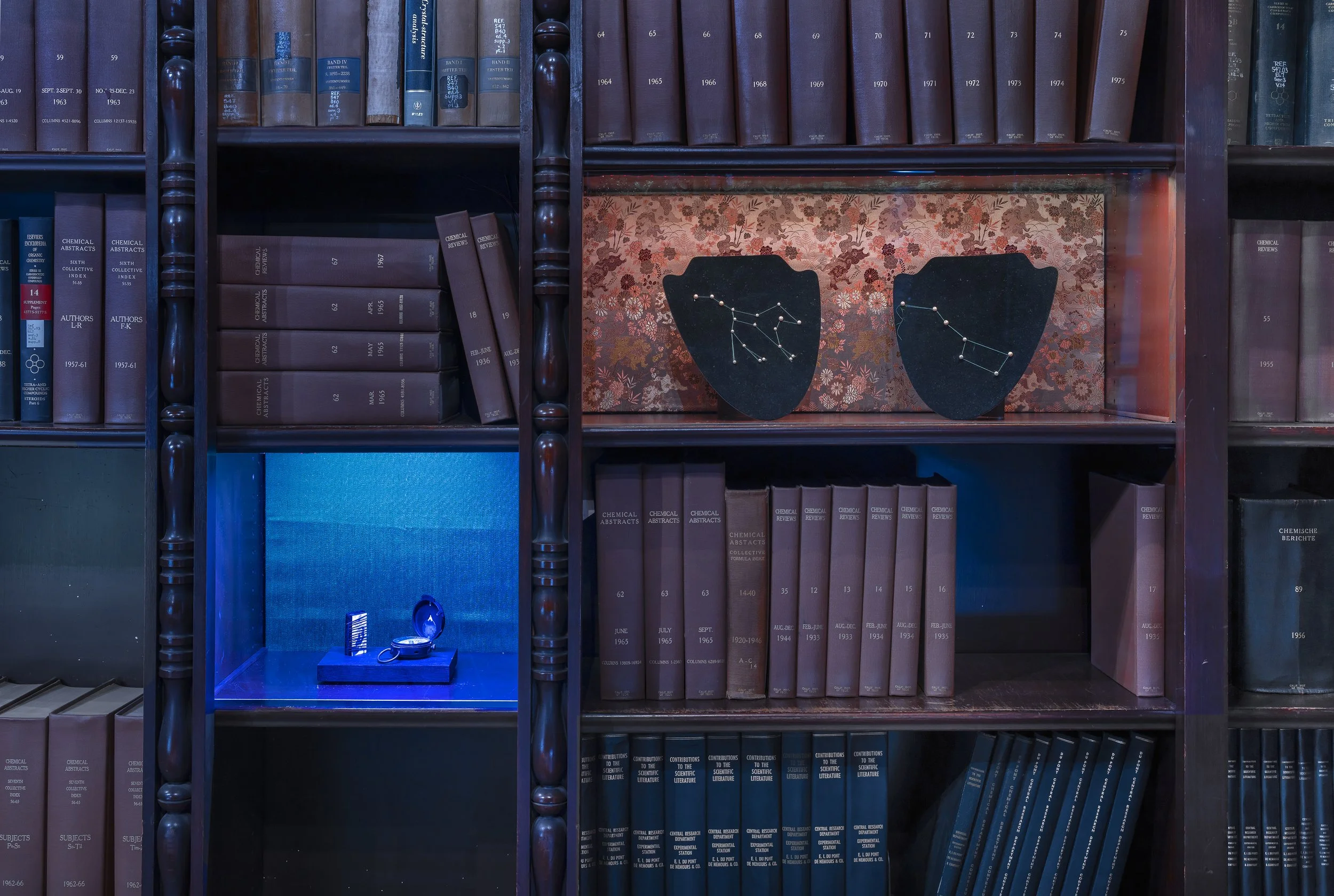Caltech Exhibition: The Intersection of Art and Science
Forward Pathway
September 28, 2024
Vignettes in the exhibition, Crossing Over: Art and Science at Caltech, 1920–2020. Left: Jane Brucker, "Magnetic Attraction (Bright Green)" (2024), Right: Jane Brucker, "Constellations (Gold and Bronze)" (2024), photography by Gene Ogami.
EXCERPT
The relationship between art and science has been a dynamic and evolving dialogue throughout history, with visual culture playing a pivotal role in shaping scientific advancements. This interplay is vividly illustrated in the exhibition Crossing Over: Art and Science at Caltech, 1920–2020, which showcases a rich tapestry of artifacts that highlight how artistic contributions have propelled scientific discovery. From scientific illustrations to the visualization of complex concepts, the exhibition serves as a testament to the profound impact that art has had on the scientific community.
One of the most significant ways in which art has influenced science is through scientific illustrations. These illustrations have historically provided a means to communicate complex ideas and findings in a visually accessible manner. For instance, the exhibition features rare first-edition books by astronomers such as Copernicus, Kepler, and Galileo, whose works were often accompanied by detailed illustrations that not only depicted celestial bodies but also conveyed the underlying scientific principles. These visual representations were crucial in disseminating knowledge during a time when literacy was limited, allowing a broader audience to engage with scientific ideas. The meticulous attention to detail in these illustrations not only served a practical purpose but also reflected the artistic sensibilities of the time, merging aesthetics with scientific inquiry.
Moreover, the role of artists in visualizing scientific concepts cannot be overstated. The “Time Stream” gallery at Caltech highlights this relationship by showcasing works by contemporary artists like Jane Brucker, who interpret historical scientific themes through their art. This gallery emphasizes how artists can distill complex scientific ideas into visual forms that resonate with the public, making science more relatable and understandable. The integration of artistic interpretation into scientific visualization fosters a deeper appreciation for the intricacies of scientific discovery, bridging the gap between the two disciplines.
